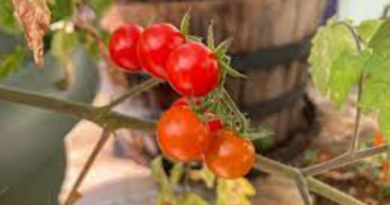Embracing the Bounty of Winter: A Seasonal Delight
As winter blankets the United States in a layer of snow and ice, the notion of fresh produce may seem like a distant memory. However, the ingenuity of nature and the dedication of farmers have given rise to a vibrant selection of winter vegetables that defy the cold, gracing our tables with flavor, nutrition, and a burst of color. Join us as we embark on a comprehensive journey through snowy landscapes to uncover the hidden treasures of winter vegetables in the USA.
The Art of Cold Weather Gardening
While winter may appear to be a barren season for vegetable cultivation, resourceful farmers have harnessed innovative techniques to grow a surprising variety of crops. Step into the world of high tunnels, greenhouses, and protective structures that create favorable microclimates, allowing winter vegetables to thrive despite the harsh conditions.
High Tunnels and Greenhouses: These structures are the unsung heroes of winter farming. They capture and retain heat, shielding delicate plants from freezing temperatures and harsh winds. Inside, a carefully controlled environment ensures the ideal conditions for growth, extending the growing season well into winter.
Cold-Resistant Varieties: Farmers carefully select cold-resistant vegetable varieties that can withstand the winter chill. These varieties have adapted to thrive in lower temperatures, ensuring a bountiful harvest even when the thermometer drops.
Root Vegetables: Earth’s Winter Gems
Root vegetables emerge as the unsung heroes of the winter season. From the vibrant orange allure of carrots to the versatile charm of potatoes, these unassuming crops store their energy beneath the earth’s surface, guaranteeing a steady supply of nourishing goodness. Dive into a world of vibrant colors, diverse flavors, and unique textures that root vegetables offer, and discover delightful recipes that showcase their remarkable versatility.
Carrots: Carrots are not only known for their vibrant hue but also their sweet, earthy flavor. They’re perfect for roasting, soups, and even a healthy snack.
Potatoes: Versatile and comforting, potatoes can be mashed, baked, or turned into crispy fries. They provide a hearty foundation for many winter dishes.
Beets: Beets add a burst of color to winter meals. They’re a delightful addition to your plate, roasted, pickled, or even spiralized into salads.
Cruciferous Vegetables: Nature’s Winter Armor
Winter wouldn’t be complete without the steadfast presence of broccoli, cauliflower, Brussels sprouts, and their cruciferous companions. These hardy vegetables stand tall, adorned in sturdy green leaves that shield them from frost and snow. Unearth the exceptional health benefits of these cold-weather champions, master the art of cooking them to perfection, and savor the essence of winter’s resilience.
Broccoli: Packed with vitamins and antioxidants, broccoli is a nutritional powerhouse. Try roasting it with garlic and olive oil for a simple yet delicious side dish.
Cauliflower: Cauliflower’s mild flavor makes it incredibly versatile. Use it to create creamy cauliflower mash or spicy cauliflower “wings.”
Brussels Sprouts: These miniature cabbages are transformed when roasted with balsamic glaze or paired with crispy bacon.
Leafy Greens: A Splash of Freshness in the Snow
Despite their name, leafy greens aren’t reserved solely for sun-drenched seasons. Enterprising farmers cultivate various winter-hardy greens, including kale, spinach, Swiss chard, and collard greens, which flourish even in plummeting temperatures. Explore the rich nutritional profiles of these winter leafy greens and ignite your culinary creativity with wholesome winter salads and comforting sautés.
Kale: A nutritional powerhouse, kale can be used in salads, smoothies, or even baked into crispy kale chips for a guilt-free snack.
Spinach: With its tender leaves, spinach is a versatile addition to winter dishes. Try it in soups, omelets, or as a bed for grilled proteins.
Swiss Chard: This vibrant green boasts colorful stems and a mild flavor. Sauté it with garlic and olive oil, or use it in hearty winter soups.
Nature’s Sweetest Offerings
Winter squash takes center stage as daylight wanes, offering comfort and warmth through its vivid colors and sweet flavors. Relish in the luscious taste of butternut squash, acorn squash, and pumpkins, and uncover the art of preparing them in comforting soups, hearty stews, and decadent desserts.
Butternut Squash: Its sweet, nutty flavor makes it ideal for creamy butternut squash soup or as a filling for ravioli.
Acorn Squash: Acorn squash’s natural sweetness shines when roasted with a drizzle of maple syrup and a sprinkle of cinnamon.
Pumpkins: Beyond carving, make delectable pies, muffins, and savory dishes like pumpkin risotto.
Seasonal Eating: Supporting Local Farmers and the Environment
Embracing winter vegetables extends beyond the pleasure of culinary exploration; it also champions sustainable practices and supports local farmers. Discover the environmental advantages of seasonal eating, including reduced carbon footprints, diminished transportation costs, and preserving agricultural diversity.
Reduced Carbon Footprints: By choosing locally grown winter vegetables, you reduce the environmental impact of long-distance transportation, resulting in fewer carbon emissions.
Preservation of Agricultural Diversity: Supporting local farmers who cultivate winter crops helps maintain a diverse agricultural landscape, reducing our reliance on a limited range of crops.
Decreased Transportation Costs: Buying locally grown winter vegetables supports the local economy and reduces the cost of transporting produce from distant regions.
Conclusion
Winter vegetables in the USA present a comprehensive feast for the senses, shattering the misconception that fresh produce is scarce during the colder months. From the resilient root vegetables to the robust cruciferous crops, the enduring leafy greens, and the sweet offerings of winter squash, winter’s bounty is an invitation to relish the season’s flavors while fostering local agriculture. So, bundle up warmly, venture into the winter wonderland, and savor the treasures nature generously bestows, even in the chilliest times.
Frequently Asked Questions (FAQ)
1. Can I find fresh winter vegetables in the USA during the colder months?
- Absolutely! Thanks to innovative farming techniques and the dedication of local farmers, you can enjoy a wide variety of fresh winter vegetables, even in the heart of winter.
2. What are some tips for selecting the best winter vegetables at the grocery store or farmer’s market?
- Look for vegetables that are firm, with vibrant colors and minimal blemishes. Check for signs of freshness, such as crisp leaves or skin, and ask local farmers for their recommendations.
3. How should I store winter vegetables to keep them fresh for longer?
- Most winter vegetables are stored well in a cool, dark place with proper ventilation. Please keep them in a root cellar, basement, or your refrigerator’s crisper drawer to extend their freshness.
4. What are some creative recipes to make with winter vegetables?
- Winter vegetables are incredibly versatile. You can roast root vegetables with herbs, make a creamy cauliflower soup, or even prepare a hearty vegetable stir-fry with winter greens. The possibilities are endless!
5. How can I support local farmers and purchase winter vegetables directly from them?
- Visit your local farmer’s market, join a community-supported agriculture (CSA) program, or explore online platforms that connect you with nearby farmers who offer seasonal produce.
6. Are there any environmental benefits to eating winter vegetables that are locally sourced?
- Yes, choosing locally grown winter vegetables reduces the carbon footprint associated with transportation, supports sustainable farming practices, and helps maintain agricultural diversity.
7. Can I grow my winter vegetables at home, even if I don’t have a greenhouse or extensive garden space?
- Yes, you can! Some cold-hardy vegetables, like kale and spinach, can be grown in small containers or raised beds with proper protection from the cold.
8. Are there any specific health benefits associated with consuming winter vegetables?
- Winter vegetables are rich in essential vitamins, minerals, and antioxidants that can help boost your immune system, improve digestion, and provide energy during winter. They are also often high in fiber, which supports overall health.




